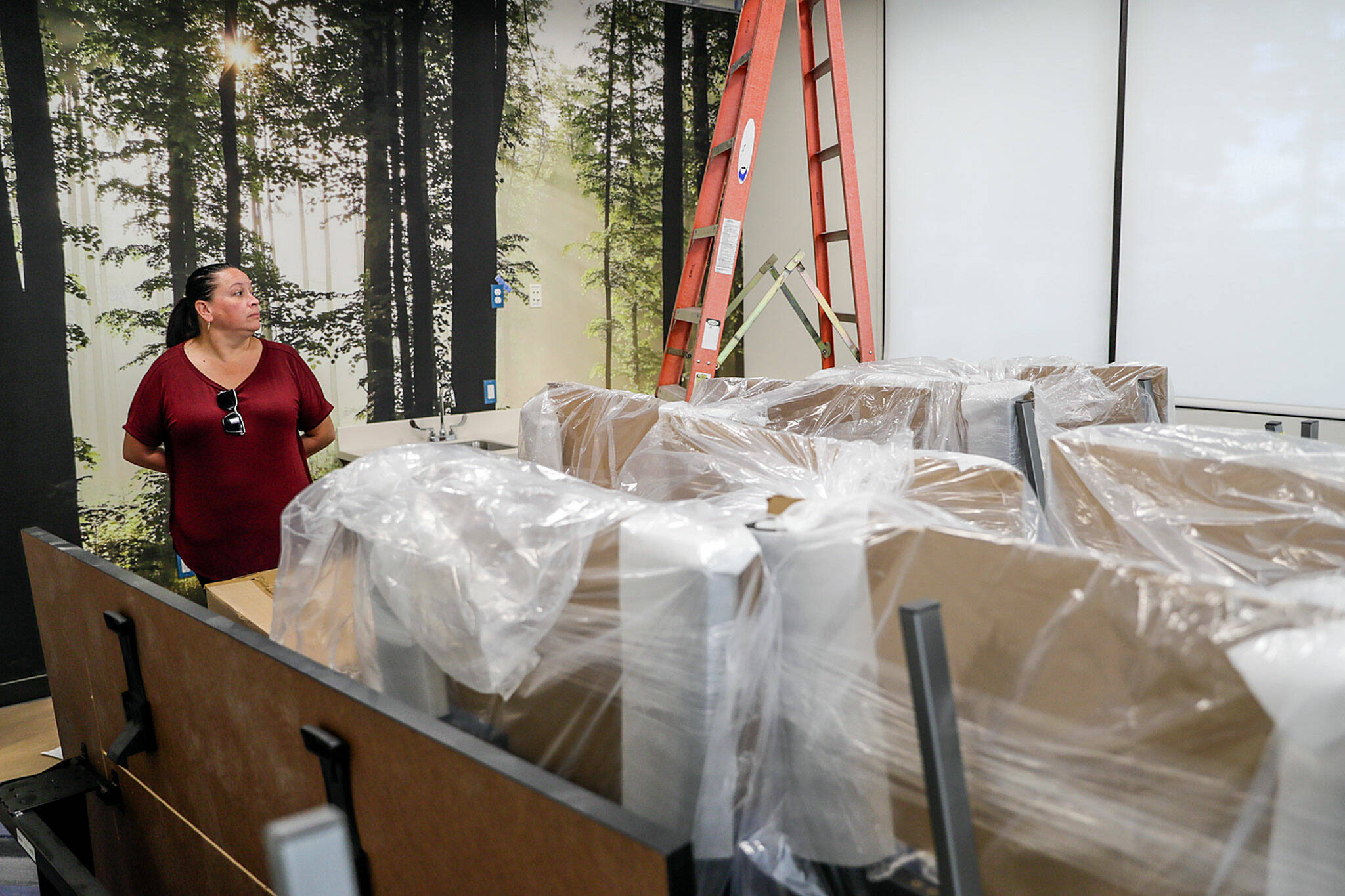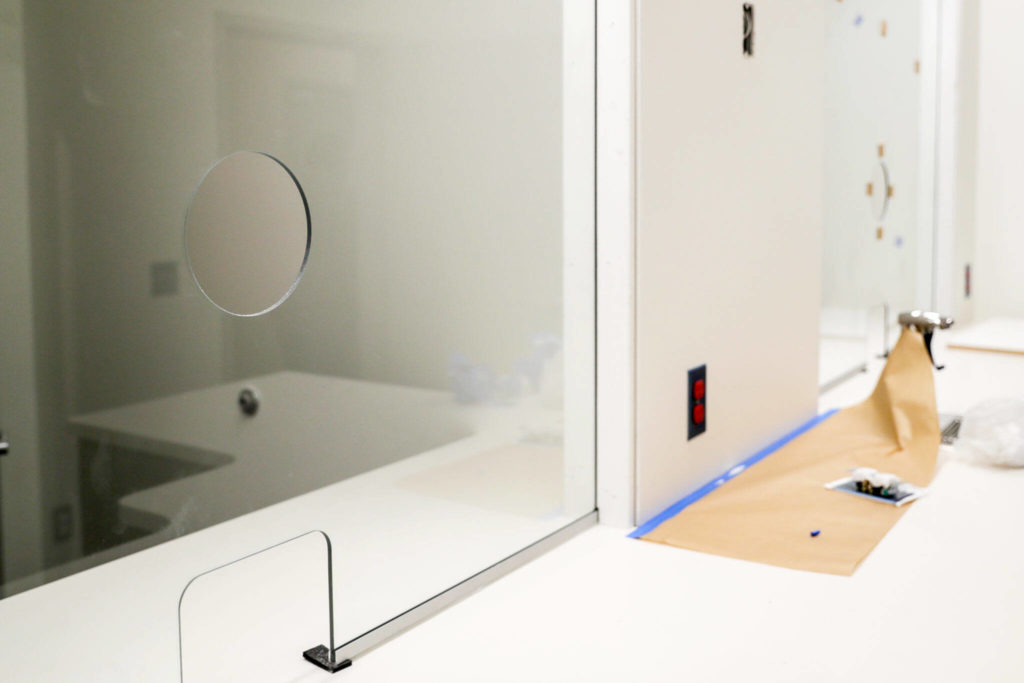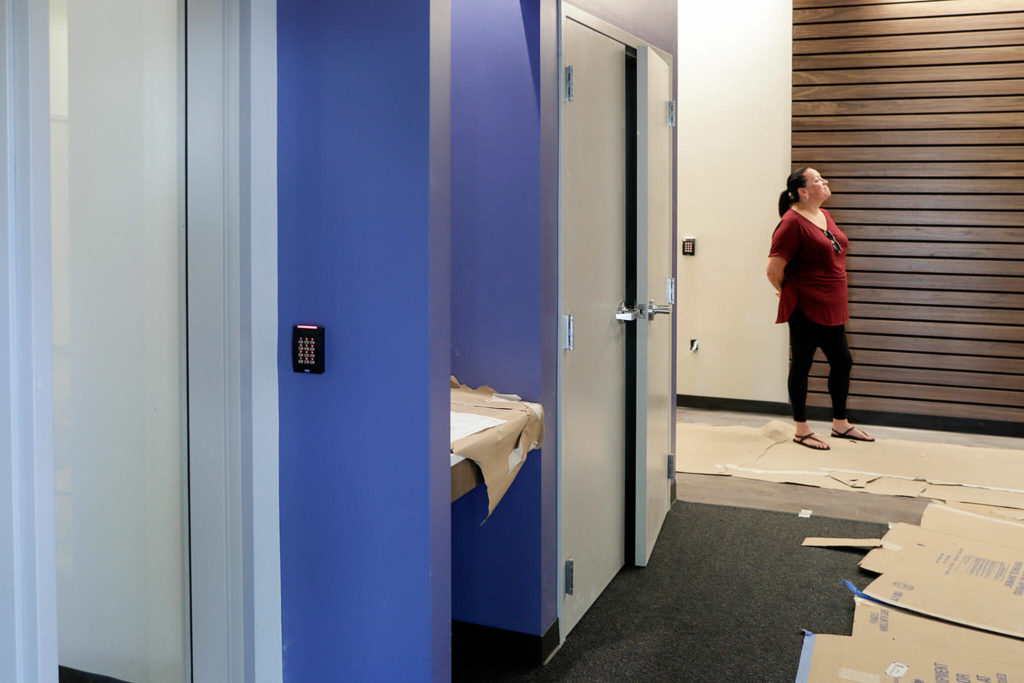TULALIP — Diane Henry has been “in the business of saving lives” since ‘94.
As the tribes’ Clinical Support executive director, Henry oversees many programs targeted at just that. There are “wellbriety” groups grounded in Indigenous traditions. There’s outpatient treatment, individual and family therapy, and a lodge for people to heal from intergenerational trauma and reconnect with culture in their recovery.
Something was missing.
“Like everywhere else, our problem with heroin did not get better,” said Misty Napeahi, vice chair of the Tulalip Tribes.
In 2020, the Tulalip Police Department responded to 19 overdoses. Not all were fatal, but in those that were, fentanyl was the cause of death. From February 2019 to April 2021, at least 32 tribal members needed medicine to reverse an opioid overdose.
This year, at least two tribal members have died of a fentanyl overdose, Henry said. About 5,000 people are enrolled Tulalip Tribal members.
This November, Tulalip is slated to have its own medication-assisted treatment facility. The clinic will provide methadone doses, mental health treatment and primary care for around 150 patients.
It will be open to anyone, not just tribal members.
Sunshine peeks through tree branches in a photo that spans one wall of the nearly-finished Tulalip clinic at 6332 31st Avenue.
“We’ll have group therapy meetings in here,” Napeahi said, giving a Daily Herald reporter a tour. “There’s going to be a lot of healing that takes place in here.”
The clinic is intended to care for the “whole person,” Napeahi said.
A social worker will be onsite to help develop a recovery plan for patients. They can help with housing, mental health care and parenting plans.
Just down the hall, watercolor silhouettes of trees in varying shades of green stand along another wall. There, in the childcare center, patients’ kids will play games and watch TV with an adult supervisor.
There are three dosing rooms. Patients will enter from the hall. Nurses will provide their prescribed dose under a plexiglass divider, then watch as patients take their methadone.
Directly across from the dosing stations are rooms for primary care.
“We know that if they’re living on the streets when they come into the program, they haven’t rebuilt their life,” Napeahi said. “And so they’re going to need some of those basic health needs met.”
There are also showers, a nursing station and a lab for urine analysis.
A white lettering reading “care lives here” will soon adorn the entryway. Workers just finished spreading dirt outside the main doors where medicine plants will soon begin to grow.
The roughly $5 million project was funded by the tribes’ “hard dollars.” The state Department of Health will help with operating costs when it opens.
The building will be ready soon, but the Tulalip Tribes are still struggling to fill the remaining jobs to run the clinic. It’s been an uphill battle from the start.
‘Meeting people where they’re at’
About five years ago, former Tulalip Tribal Councilmember Les Parks first advocated for a methadone clinic on the reservation. There was pushback. Methadone was seen by Napeahi and others as a “crutch.”
After seeing how the clinics work elsewhere, tribal leaders had a change of heart, Napeahi said. Tulalip tribal members were already being referred to treatment at the Stillaguamish Tribe’s clinic in Arlington.
“They didn’t want methadone here,” Henry recalled. “But then after we started to see more and more folks are utilizing fentanyl as opposed to even heroin … now there’s an understanding that we need a different type of method to work with our folks. This is just another way for us to try to prevent deaths in our community.”
Patients are at risk of overdosing more than ever because of the fentanyl epidemic. Fentanyl is a synthetic opioid that’s 50 to 100 times stronger than morphine, according to the Centers for Disease Control and Prevention.
Fentanyl is often mixed with other common street drugs, according to the Snohomish Regional Drug task force.
“It’s what’s taking our young people the most,” said Teri Gobin, chair of the Tulalip Tribes. “And that’s on a regular basis.”
For chronic fentanyl users, going cold turkey rarely works.
Withdrawals are too severe and many patients end up relapsing. Once people are exposed to potent substances like heroin or fentanyl, their brain chemistry chronically changes, said Dr. Gina Cadena-Forney, medical director for the Stillaguamish Tribe.
It’s very unlikely that someone’s brain function will reset to normal after they stop using opioids. Methadone works on the same brain receptors as opioids to reduce cravings and withdrawal. It helps patients to gain stability and get back to a more functional life, Cadena-Forney said.
A 2022 study found a medication assisted treatment program in rural Colorado helped reduce substance use, improved patients’ physical and mental health and reduced symptoms of addiction after six months.
The majority of patients — over 80% — voluntarily sought treatment, the study revealed. Others sought treatment due to a court order, or to be on parole or probation.
After six months of treatment, about 80% of patients did not report any opioid use. They also reported reduced anxiety and pain.
“I understand people’s biases against methadone, because I had those same biases,” Napeahi said.
It’s a shift in how the Tulalip Tribes had approached medication-assisted treatment for about two decades, Napeahi said.
“We’ve realized that we’re not going to beat this epidemic with abstinence,” she said. “We’re going to beat this epidemic by meeting people where they’re at and giving them what they need so that they can become better citizens.”
‘That is success’
The Stillaguamish Tribe opened their first methadone clinic in a doublewide trailer almost two decades ago.
Around that time, a majority of tribal leadership had at least one family member with a substance use disorder, said Stillaguamish tribal Chair Eric White. They saw the importance of giving people a chance to lead stable lives.
Director Kelly Campbell has been there since patient one. Now, the 48,000-square-foot building serves 750 patients.
When a patient comes in for the first time, they receive a medical evaluation. If they are diagnosed with an opiate use disorder, they may start on a low dose of methadone.
The clinic also provides mental health counseling and primary health care. A case manager helps patients navigate their recovery, Campbell said.
“If they’re showing up to the clinic every day, and they’re alive,” Campbell said, “that is success.”
Campbell rattled off success stories. Parents come in, get off street drugs and get their kids back. People are able to go back to school, work or take care of family.
After someone has been compliant with the program for two years — passing urine tests, working or in school, attending counseling — they are eligible for a monthly methadone dosage pickup.
Not everyone needs it. The majority of people who begin a treatment program need it for less than five years. Some people may need methadone for the rest of their lives.
“It’s a medication that they may need to make it through life,” Campbell said. “Just like if you need diabetic medication or an antidepressant. I think that’s the way you have to look at this: how it is saving their life.”
‘For generations to come’
The opioid epidemic in Indian country is worse than any other segment of the American population, Lloyd B. Miller, a lead lawyer for a lawsuit against opioid makers, told The Daily Herald earlier this year.
Growing up on the Stillaguamish Reservation, Vice Chair Jeremy Smith said he saw many people living with alcoholism. Then came the highly addictive opioids.
“We have some families that have struggled for generations with addiction,” said Napeahi, the Tulalip vice chair. “We know that when we map that all the way back, it goes all the way back to contact to the very colonization of our people.”
Federal policies of Native family separation and assimilation, for example, created trauma that has spanned generations.
For nearly a century, children as young as 5 were uprooted from their community and placed in federal boarding schools where they were often beaten and forbidden from practicing their culture.
As that era came to a close, U.S. Congress passed the 1956 Indian Relocation Act, which encouraged Native Americans to cede reservations and their traditional lands, and to assimilate into urban areas. It further weakened community and tribal ties.
Chronic trauma can literally leave a “trauma trail” on the DNA from one generation to the next, according to clinicians.
Those who grew up in federal programs like boarding schools didn’t learn parenting skills, and often didn’t pass those skills on to their children.
A 2019 study found Indigenous people raised by boarding school survivors suffered far more traumatic events in childhood, compared to those with parents who did not attend the schools.
To cope, some people have turned to substances.
“Not every person has the support or the inherent capability capabilities to get out of that cycle,” Napeahi said. “And so it’s become the tribes responsibility to create programs and build opportunities for our tribal members to engage and build themselves back up and change their families for generations to come in a positive way.”
Isabella Breda: 425-339-3192; isabella.breda@heraldnet.com; Twitter: @BredaIsabella.
Resources
Tulalip tribal members can get a free Narcan kit. Visit www.tulaliptribalcourt-nsn.gov/ProgramsAndServices/ODMAP for more info.
Washington state pharmacies carry Narcan (also known by its generic name naloxone) and can distribute without a prescription. Insurance may cover some of the cost.
How to administer Narcan: vimeo.com/357020563 and bit.ly/3OWWjrL
Snohomish County resources: snohomishoverdoseprevention.com
Find treatment options near you at SAMHSA’s findtreatment.gov
Washington Recovery Help Line: 1-866-789-1511
Talk to us
> Give us your news tips.
> Send us a letter to the editor.
> More Herald contact information.



























